One Day in Rocky Mountain National Park: Exploring High Peaks & Scenic Trails
By Daniella from Sampler Platter Travel – this guide to Rocky Mountain National Park contains affiliate links to trusted partners!
Only have one day in Rocky Mountain National Park and want to know how to maximize your time?
We spent one day in the park during a trip to Denver and loved it. We thought we got a good sample of the park by doing a scenic drive along the Trail Ridge Road and hiking to Cub Lake. It was a particularly snowy March day, so we rented ice picks for our shoes – we’re so glad we did that!
In this national park itinerary, we will share how to get to this beloved park, what to see, and where to stay. Although the park has 3 entrances, most travelers head to 1 of 2 near the town of Estes Park, a great basecamp for those who don’t want to make the trek from Denver.
While you could certainly spend more than one day in Rocky Mountain National Park, Sampler Platter Travel is dedicated to fast itineraries helping you prioritize things to do if you only have a short amount of time.
Happy sampling!
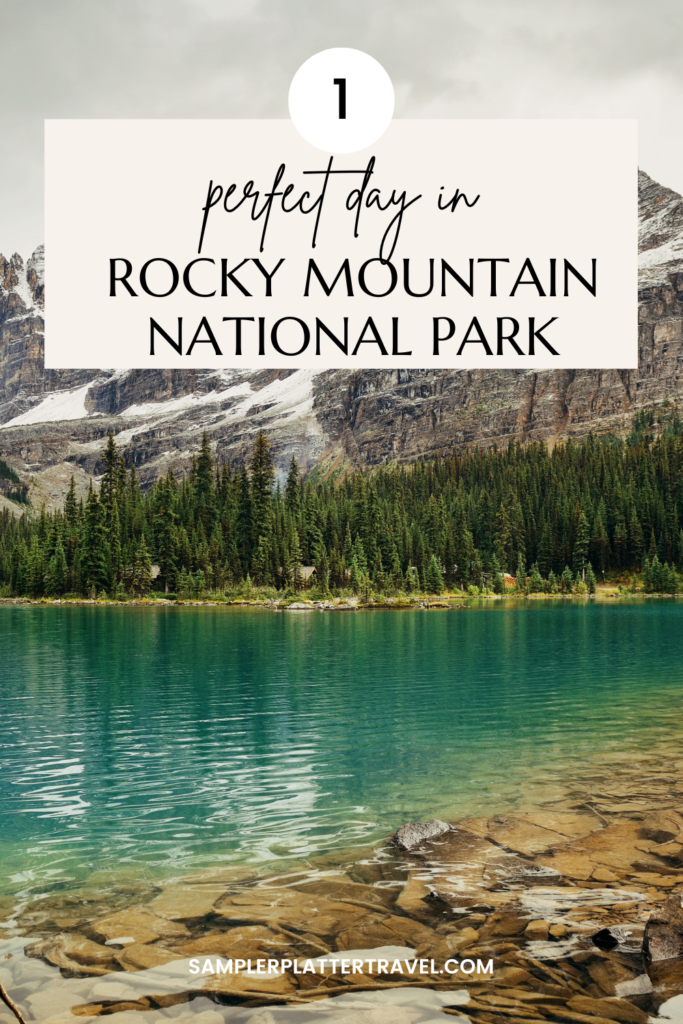
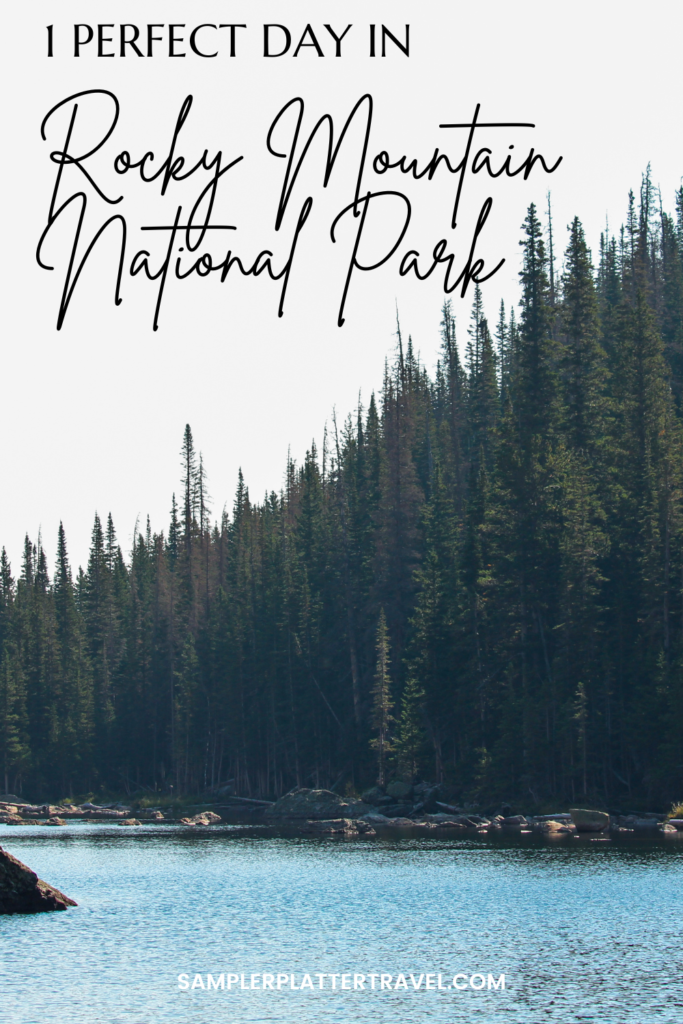
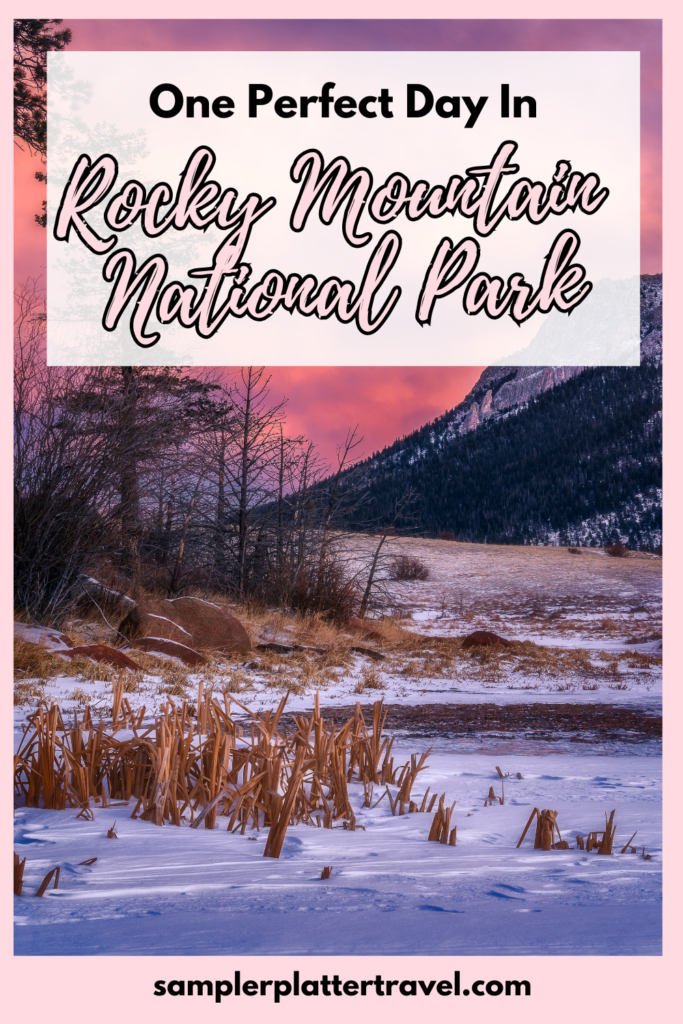
About Rocky Mountain National Park
Rocky Mountain National Park is located in Northern Colorado, spanning over 265,000 acres with super diverse landscapes. It was established in 1915 and protects abundant wildlife.
The whole park is home to more than sixty peaks over 12,000 feet, including Longs Peak (one of the most iconic spots) standing at 14,000 feet.
Travelers who love diverse ecosystems will not be bored in Rocky Mountain National Park. The variety of ecosystems in the park ranges from mountainous forests to alpine tundra.
Caught the National Park bug?
Check out other blogs in our ‘One Day in a National Park’ series:
Top Tours in Rocky Mountain National Park
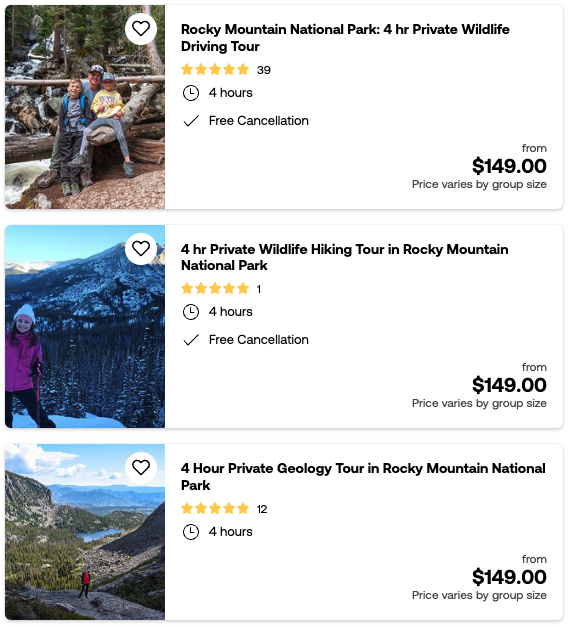
Top 5 Reasons to Visit Rocky Mountain National Park
(1) Diverse Landscapes
Rocky Mountain National Park is home to some of the best scenery in the US from mountain peaks to alpine lakes, forest, and more. With over 350 miles of hiking trails, you can experience all of the different landscapes.
(2) Trail Ridge Road
One of the most famous features in the park is Trail Ridge Road, considered to be the highest continuous paved road in all of North America. It reaches an elevation of over 12,000 feet and allows drivers to catch breathtaking views of the park. It’s very hard to visit Rocky Mountain without driving part of the Trail Ridge Road, and you won’t want to miss it.
(3) Fall Foliage and Elk Rutting Season
Fall is one of the most beautiful times to visit Rocky Mountain National Park as it transforms into a gorgeous display of fall colors. It also happens to be when the season of elk rutting occurs. If you don’t know what this is, neither did I! The fall season is when elk herds go through mating rituals and make distinctive calls. Visitors can witness this incredible “show” throughout the park.
(4) Year-Round Appeal
There are various US National Parks that are only accessible or enjoyable during certain parts of the year. For instance, don’t even attempt to make a trip to Alaska in the winter, and likewise, you probably won’t enjoy the South Florida parks in the dead of summer.
However, Rocky Mountain National Park is both accessible from Denver – making it convenient for short visits – and open year round. It provides a different experience in every season with wildflowers blooming in the spring, great hiking conditions in the summer, colorful foliage in the fall, and snow sports in the winter.
(5) Tons of Recreation Opportunities
Rocky Mountain National Park is fully set up to allow visitors to rent equipment for a short period of time to enjoy themselves fully. We were a little worried about renting equipment and going out for the day without a guide. Luckily, Estes Park Mountain Shop has an ample supply of snowshoes, ice spikes, cross country skis, and more.
Without over 350 miles of hiking trails, you can explore anything from an easy nature walk to a challenging backcountry route. Camp, fish, rock climb, horseback ride, and do winter sports at your own leisure.
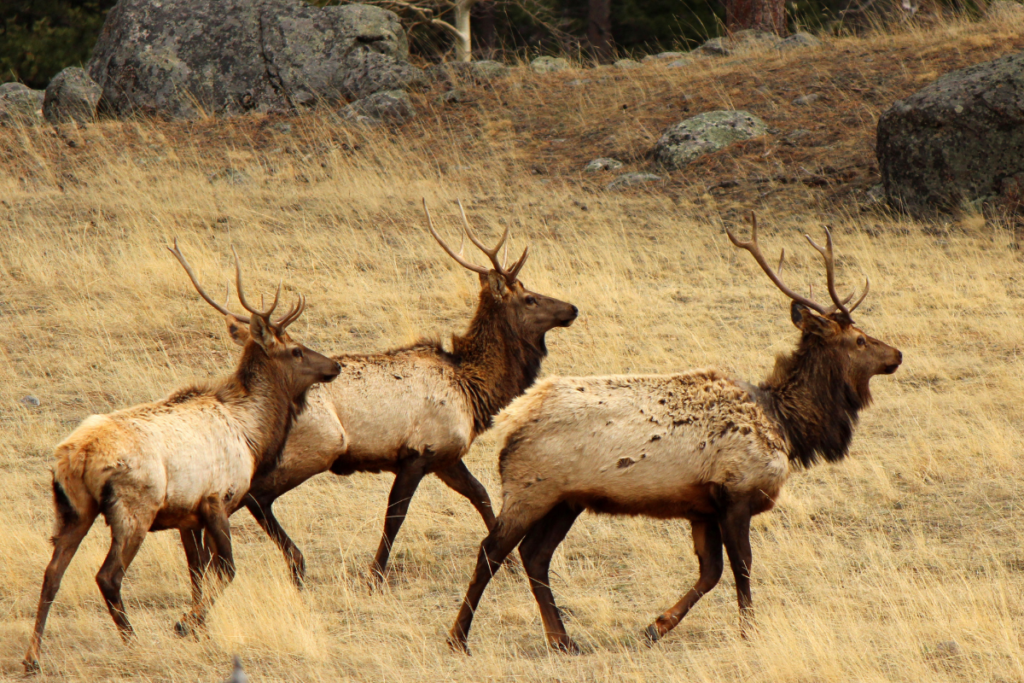
When Should You Visit Rocky Mountain National Park
Spring is when the park slowly starts to thaw and melting snow gives way to blooming wildflowers. Higher elevations might still be covered in snow.
Spring is a very variable time to visit the park because you may get lucky with an early spring or be caught in a late-season snowfall.
While a lot of the higher elevation trails might be closed, lower elevation trails start to open for hiking, and hibernating animals will emerge from their dens around this time.
Summer is peak season for a reason – warm temperatures and incredible access to trails and roads! Hiking, camping, fishing, and scenic drives are most popular during this time.
While the beautiful weather might draw you in, keep in mind that is appeals to everyone, so crowds will be a plenty.
Fall is an incredible season with colorful foliage and elk rutting season! Towards late fall, there can definitely be some snow, especially at the higher elevation trails.
Winter can be a tricky season to visit. Thanks to snowfall, many roads and trails will be temporarily closed.
However, if you are a fan of snowshoeing or cross country skiing and are prepared for cold weather with adequate layers, you will find that it is a very tranquil time to visit the park.
We highly recommend checking in with the National Park Service before your arrival to stay up to date on weather conditions.
We loved the folks over at the Estes Park Mountain Shop. They were knowledgeable about local trails and redirected our attention to a better option than the one we had planned. They knew the snow conditions and had us rent ice spikes instead of snowshoes. Without them, it would have been trouble!
Top Pick: for a truly magical experience, visit the park between late September and early October. This is when the perfect combination of fall foliage and wildlife activity occurs (with elk rutting). Comfortable temperatures will make hiking pleasant.
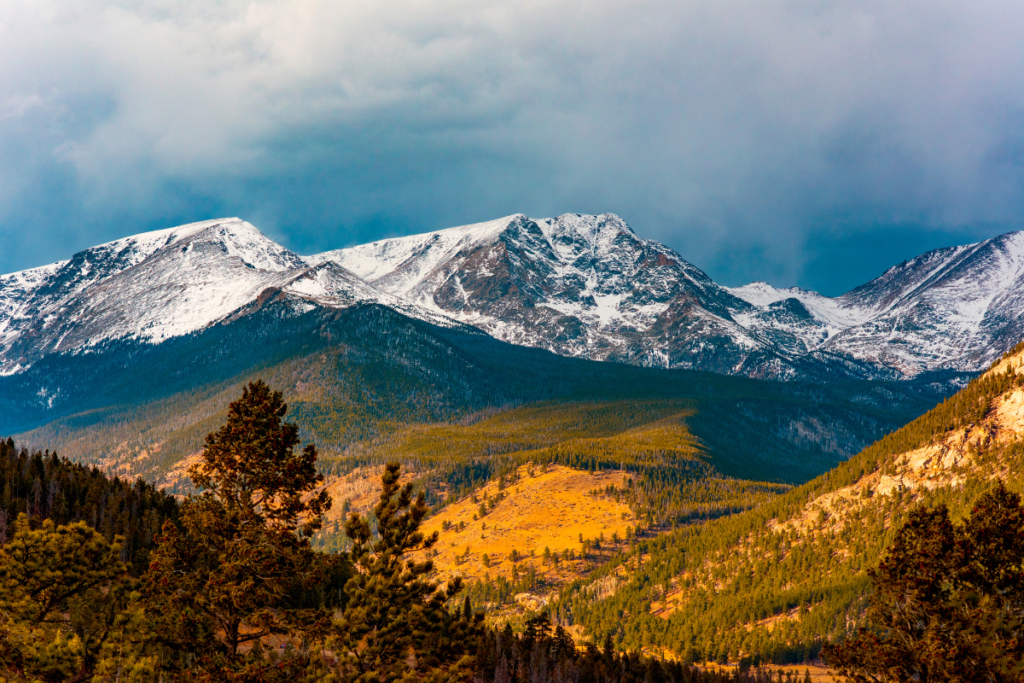
How to Get to Rocky Mountain National Park
Our top recommendation to get to Rocky Mountain National Park is to fly into Denver International Airport, located about 70 miles southeast of the park. We suggest renting a car – even though a bus to the park exists, there is a lot more flexibility with your own set of wheels.
During peak season of late May to early October, the park operates a free shuttle bus serving popular trail heads. It is convenient if you are planning on doing popular routes, but make sure to plan ahead based on the bus schedule.
Within the park, there are 3 entrances, with 2 around Estes Park, the nearby town. It has the most amenities including lodging, restaurants, and rental shops.
Entrance Fees and Park Passes
| Pass | Price |
| Standard | 15-35 |
| Annual Pass | 70 |
| America the Beautiful (including Senior) | Free-$80 |
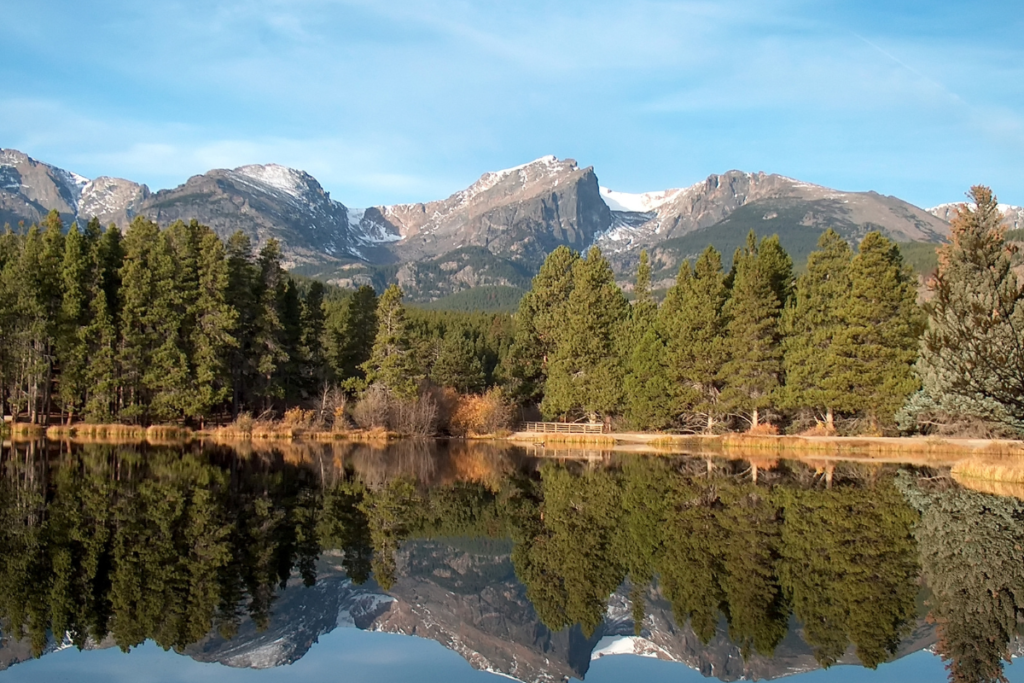
Top 10 Hiking Trails in Rocky Mountain National Park
(1) Bear Lake Loop
- Length: 0.8 miles (1.29 km)
- Difficulty: Easy
- Description: This short loop around Bear Lake offers incredible views and is accessible for all ages and skill levels. It’s a great introduction to the park and is perfect for those looking to do a leisurely walk.
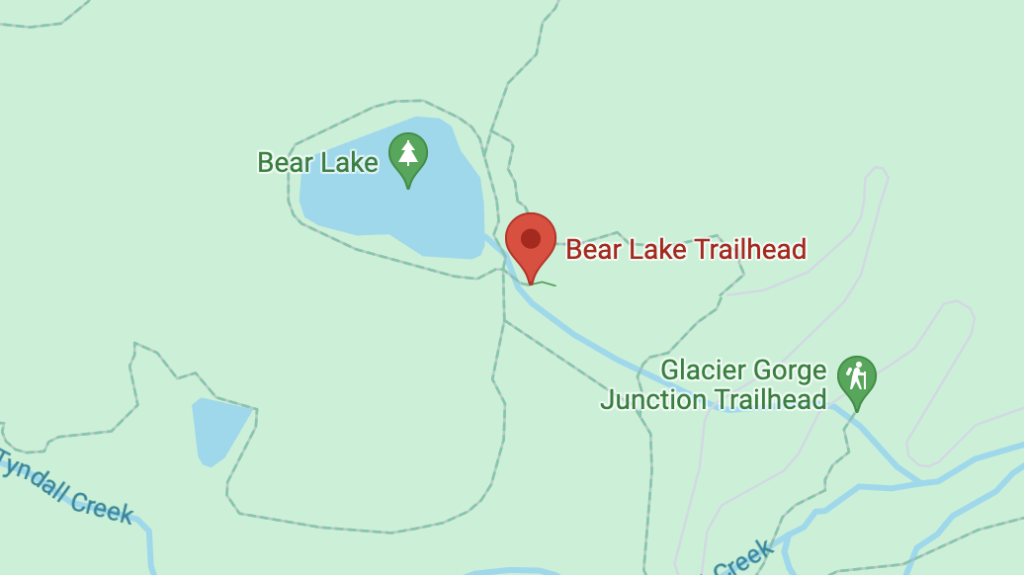
(2) Alberta Falls Trail
- Length: 1.7 miles (2.7 km) round trip
- Difficulty: Easy
- Description: Starting from the Glacier Gorge Trailhead, this hike leads to the beautiful Alberta Falls – a 30-foot waterfall that tumbles into Glacier Creek. The trail is relatively short with a moderate incline.
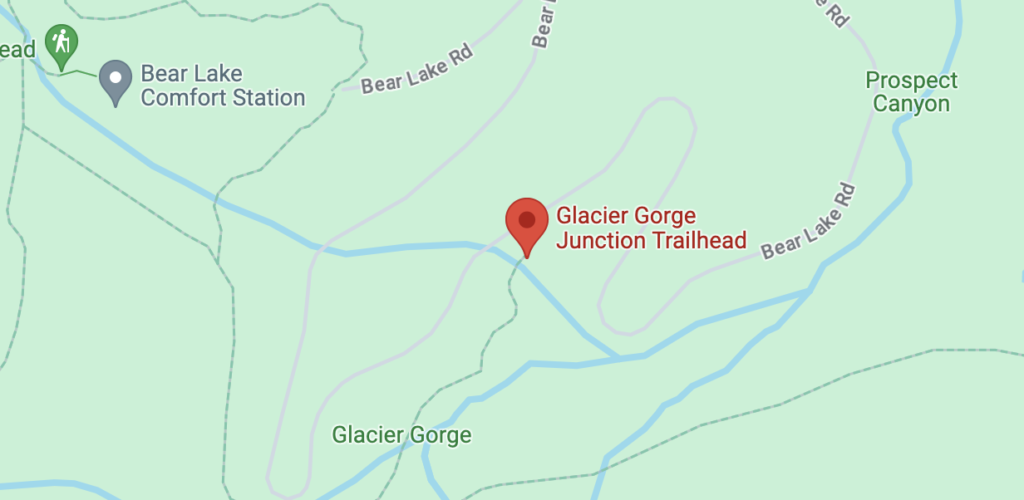
(3) Emerald Lake Trail
- Length: 4.1 miles (6.6 km) round trip
- Difficulty: Moderate
- Description: Starting at the Bear Lake trailhead, pass by Nymph Lake and Dream Lake before reaching Emerald Lake, an incredible alpine lake beneath Flattop Mountain.
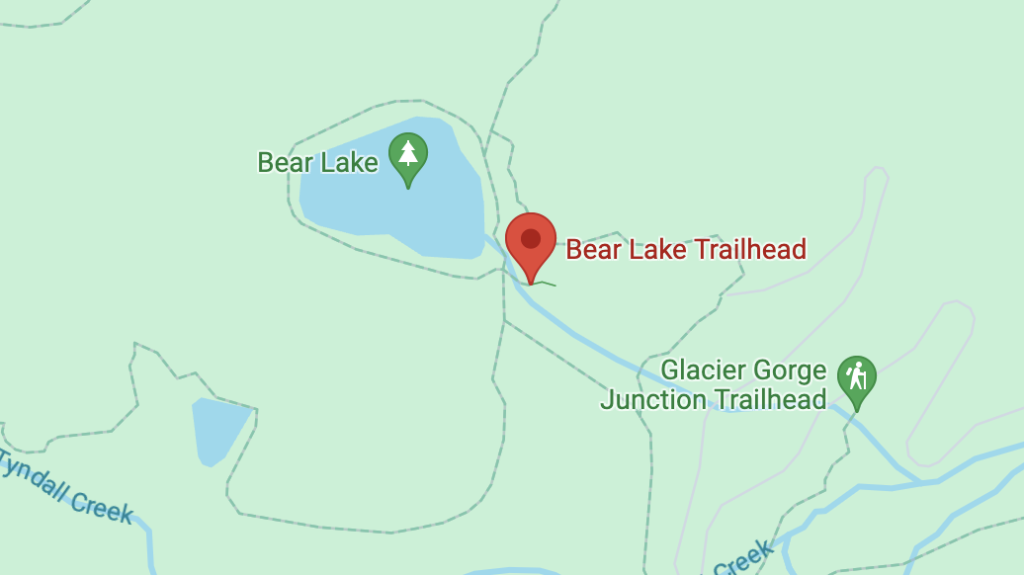
(4) Sky Pond via Glacier Gorge Trail
- Length: 9 miles (14.5 km) round trip
- Difficulty: Strenuous
- Description: This challenging hike passes by Alberta Falls and continues through Loch Vale, Timberline Falls, and finally, Sky Pond. Hikers may find themselves scrambling a bit near Timberline Falls.

(5) Longs Peak (Keyhole Route)
- Length: 14.5 miles (23.3 km) round trip
- Difficulty: Strenuous
- Description: This climb to the summit of Longs Peak is not for the faint of heart. The trail involves a mix of hiking, scrambling, and exposed sections, where hikers have to beware of falling rock potential. The effort is rewarded with incredible views at the top of Longs Peak but should only be attempted by experienced hikers.
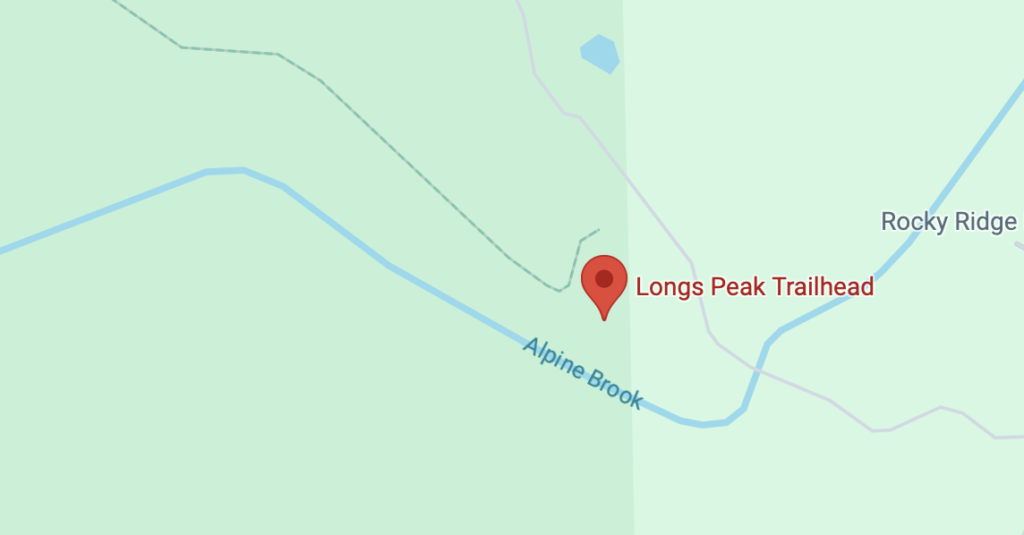
(6) Chasm Lake Trail
- Length: 8.4 miles (13.5 km) round trip
- Difficulty: Strenuous
- Description: Starting from the Longs Peak Trailhead, this trail leads to Chasm Lake, which involves significant elevation gain.
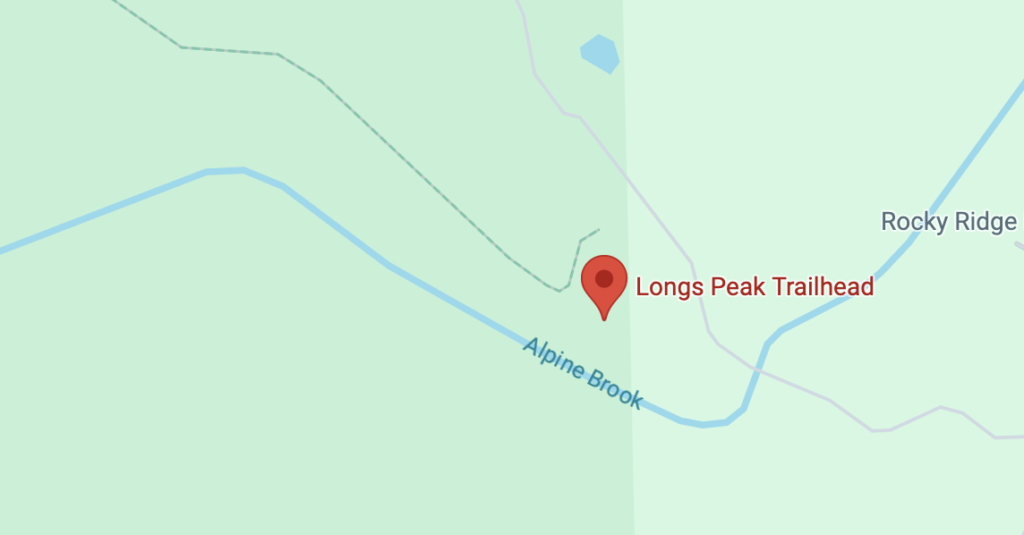
(7) Ute Trail to Tombstone Ridge
- Length: 4 miles (6.4 km) round trip
- Difficulty: Moderate
- Description: Starting from the Alpine Visitor Center, this trail offers views of the tundra without a lot of climbing involved. Thanks to gentle elevation changes, it’s a relatively moderate hike.
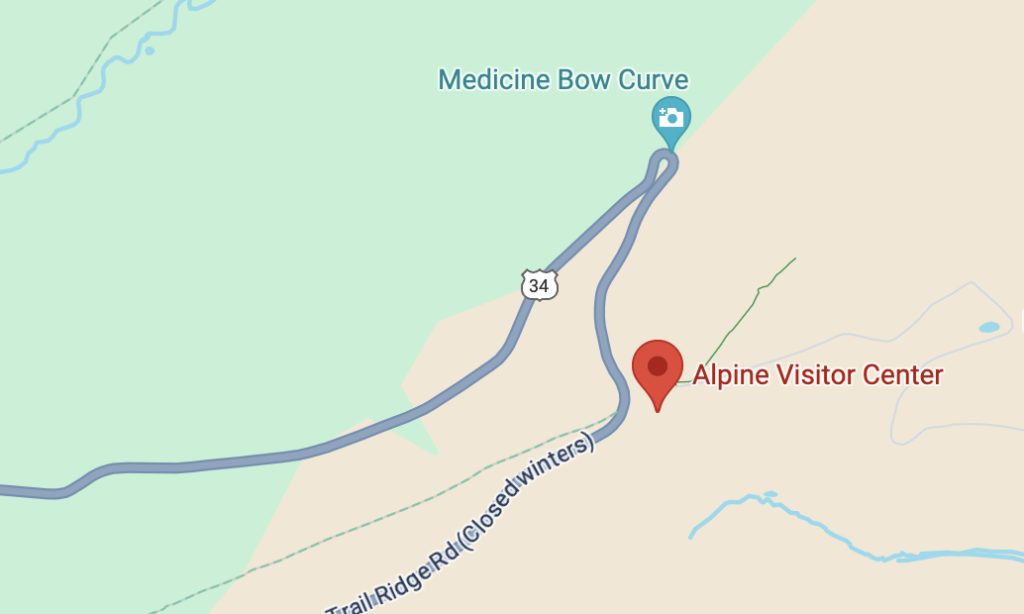
(8) Twin Sisters Summit Hike
- Length: 7.4 miles (11.9 km) round trip
- Difficulty: Strenuous
- Description: This hike is challenging but features a trail through a forest and steep switchbacks. The final push requires some scrambling.
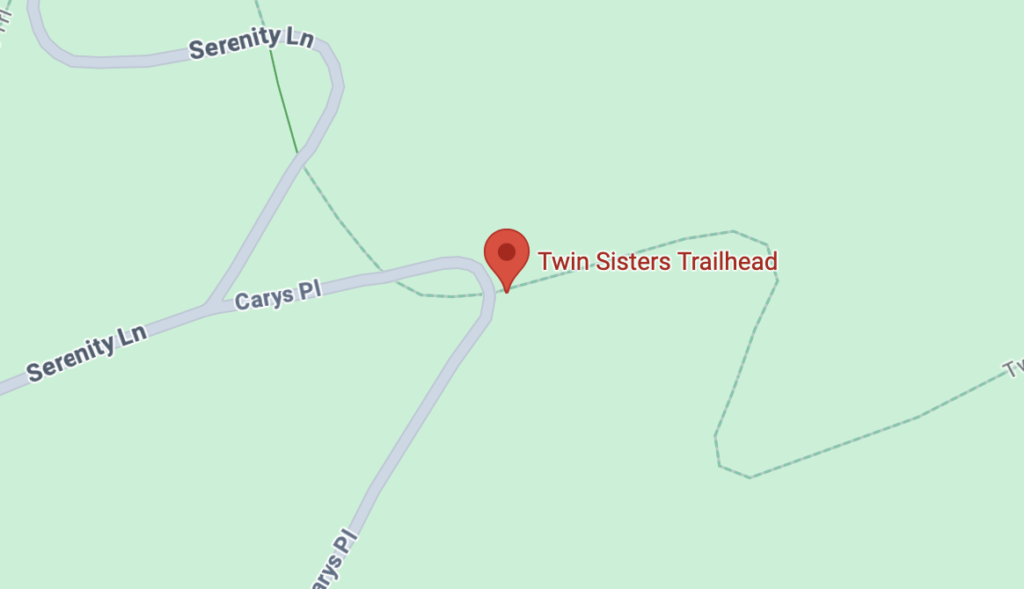
(9) Mills Lake Hike
- Length: 5 miles (8 km) round trip
- Difficulty: Moderate
- Description: This trail also begins at Glacier Gorge and has visitors hike past waterfalls and streambeds. At the end, hikers have the option of continuing an extra 1.7 hard miles (2.7 km) to Black Lake or turning back.
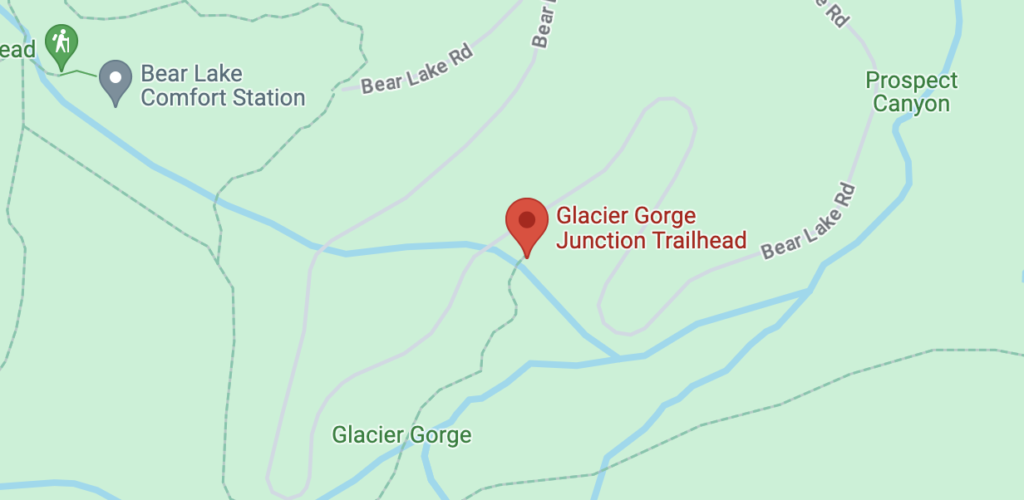
(10) Cub Lake Loop
- Length: 4.8 miles (7.7 km) round trip
- Difficulty: Moderate
- Description: We did this hike and loved the diversity. It’s a relatively easy hike with not too much of an elevation change but includes a lot of different landscapes such as meadows and forests.
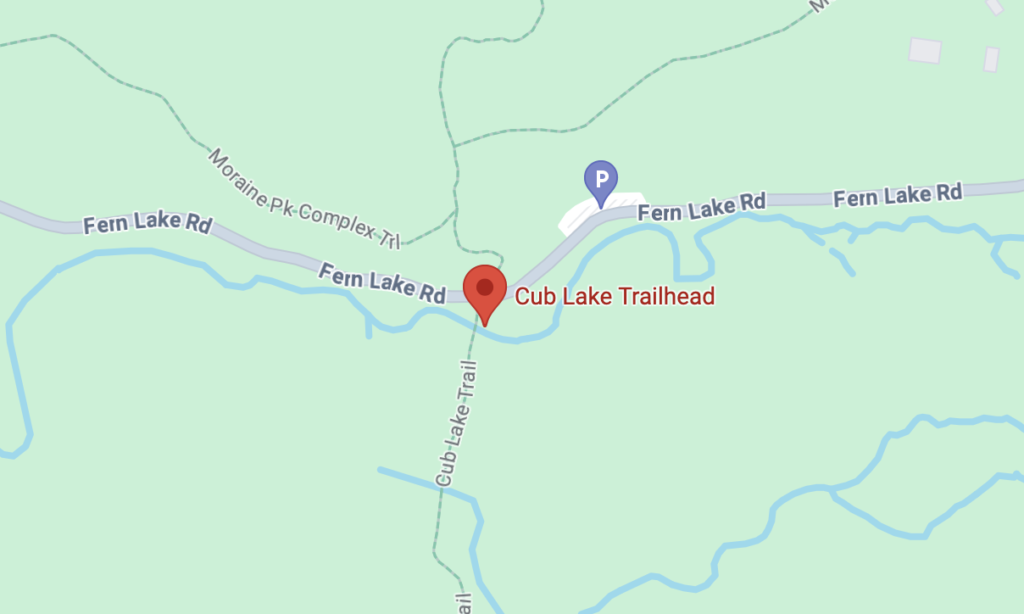
5 Things to Do in Rocky Mountain (That Aren’t Hikes)
As you can tell by our 10 listed hikes, we absolutely love hiking. However, if you just want to visit the park and hang out, these are the top 5 non-hiking activities in the park:
(1) Scenic Drives
You can see so much of Rocky Mountain National Park from the comfort of your car. The most famous scenic drive is the Trail Ridge Road which is the highest continued paved road in North America, reaching elevations over 12,000 feet. You get beautiful views of the Rockies and the potential to spot wildlife.
While the drive itself takes about 3 hours round trip, budget more time to stop and take photos. You won’t want to rush this one!
If you want a slightly quieter drive, take the Old Fall River Road, a history dirt road that offers a scenic drive up to the Alpine Visitor Center.
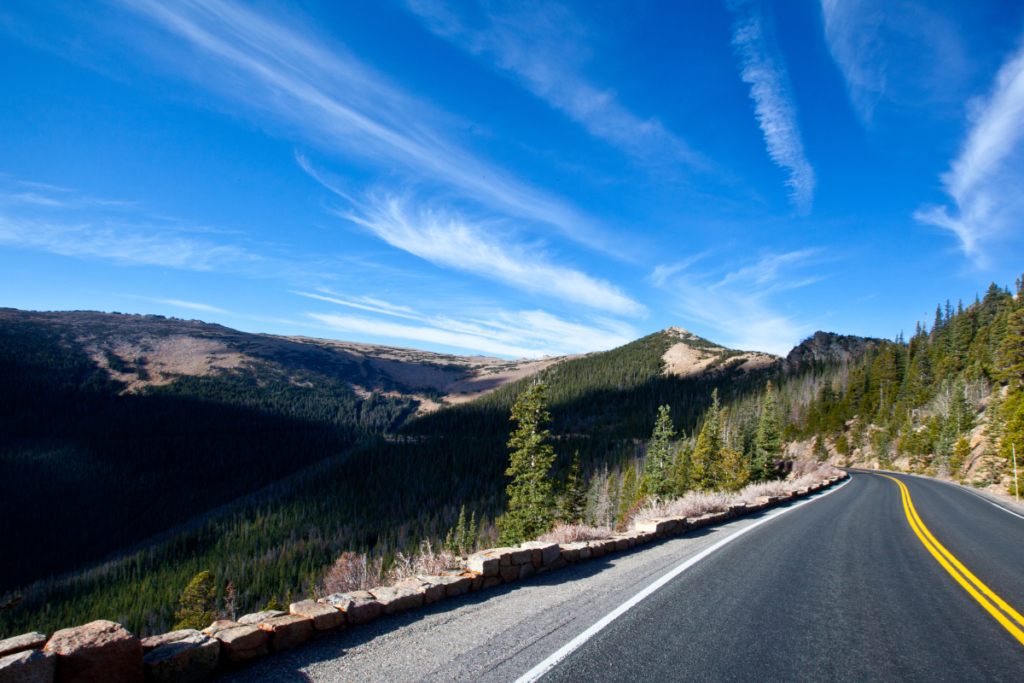
(2) Wildlife Viewing
Vising the park during fall, the elk rutting season, is incredibly popular. Apart from watching the mating rituals of elk, you can also find moose and bighorn sheep. Hang around the park during dawn and dusk for optimal viewing times.
Top wildlife spotting sites include: Marine Park, Horseshoe Park, and Kawuneeche Valley.
(3) Go Fishing
If you have a valid Colorado fishing license and follow the parks fishing regulations to protect the aquatic ecosystem, fishing is a great activity. The park offers a lot of opportunities in its many lakes and streams.
Top fishing sites include: Sprague Lake, the Loch, and Big Thompson River.
(4) Ranger-Led Programs
A particularly good option for families with kids is to do a ranger-led program. This is an organized way to see the park, including education talks, wildlife presentations, guided walks, and stargazing events.
Rangers are incredibly knowledgeable about their park and will teach you a lot more than what you would learn by walking around. Check out the park’s visitor center website for topics of upcoming programs.
(5) Enjoy Photography Opportunities
Finally, if you just want to snap some photos from your car or during a short walk, there are incredible photography options in the park. Bear Lake is a very popular option for photo-fiending travelers.
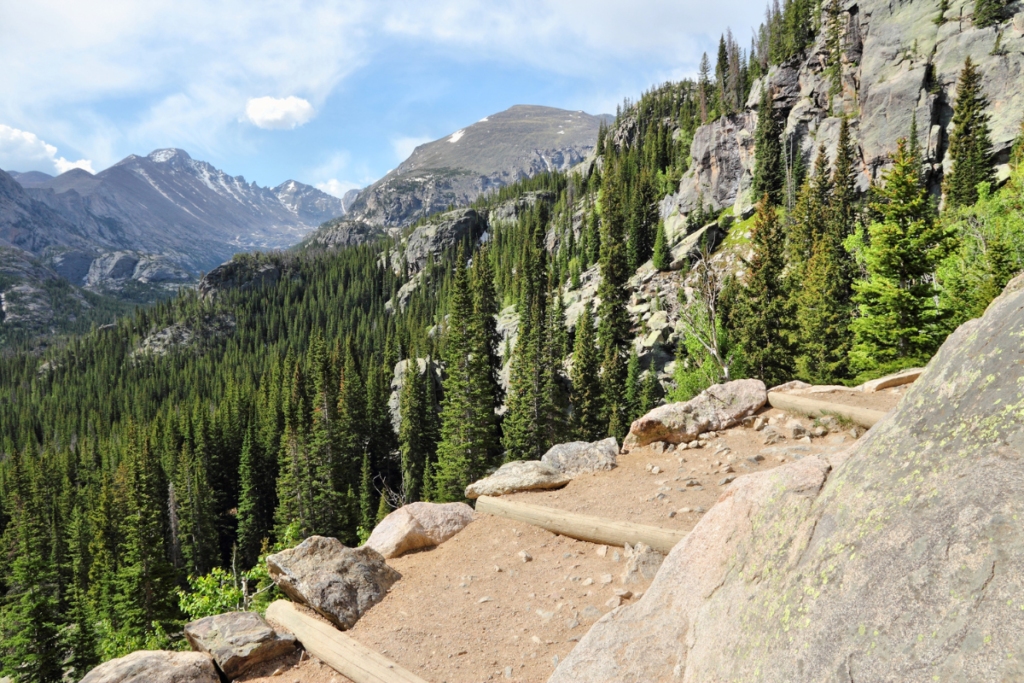
What Should You Bring for One Day in Rocky Mountain National Park?
- Water – it’s never a bad idea to stock up on water, especially if you are planning on doing some hiking. Bringing at least 2 liters of water per person is ideal, but in hot summer temperatures, 3 liters is a better idea. Yes, we know, it can be heavy to carry that much water. We promise it’s important.
- Food and Snacks – Estes Park has quite a few restaurant options, but once in the park, you’ll be out of luck. Bring some high-energy snacks or a small meal to keep your energy up, especially when hiking.
- Comfortable Footwear – Make sure to pack sturdy, comfortable shoes for walking on rocky and uneven surfaces. If you are planning on doing one of the strenuous trails like Longs Peak, you will want to pack real hiking boots as opposed to trail runners.
- Sun Protection – Bring any and all protection from the sun, including sunscreen, a hat, and UV clothing. Some trails have shaded forest paths but a lot provide no break from the sun.
- Snow Gear – If visiting during the winter, get your layers on, including a down jacket and a hat. If you don’t have gear of your own, we recommend the Estes Park Mountain Shop for all of your cross country ski, snowshoe, and ice spike needs.
- Layers – Rocky Mountain National Park’s weather can surprise you! Be prepared by bringing layers, even if you think you won’t need them. When summiting peaks and exploring alpine tundra ecosystems, you’ll find that it is a lot colder than on the ground.
Where to Stay for One Day in Rocky Mountain National Park
Camping in the Park
Not including backcountry camping opportunities (of which there are over 200), the park has 5 campgrounds that offer drive-in spots.
(1) Aspenglen Campground
- Location: Near the Fall River Entrance
- Facilities: No camp store, firewood, laundry, potable water, or a dump station. Flush toilets are seasonal. Definitely one of the most rustic options
- Reservations: All campsites are available by reservation only
(2) Glacier Basin Campground
- Location: Along Bear Lake Road
- Facilities: Flush toilets, potable water, and food storage lockers. No showers
- Reservations: All campsites are available by reservation only
(3) Moraine Park Campground (Closed Summer/Fall of 2024)
- Location: Off Bear Lake Road
- Facilities: No toilets, showers, or dump stations. There is potable water
- Reservations: All campsites are available by reservation only
(4) Timber Creek Campground
- Location: Along Trail Ridge Road, approximately 8 miles from the town of Grand Lake
- Facilities: Seasonal flushing toilets, dump stations, and potable water. No showers
- Reservations: All campsites are available by reservation only
(5) Longs Peak Campground
- Location: 20 miles south of Estes Park – tents only
- Facilities: Vault toilets, no water, no showers
- Reservations: No reservations required
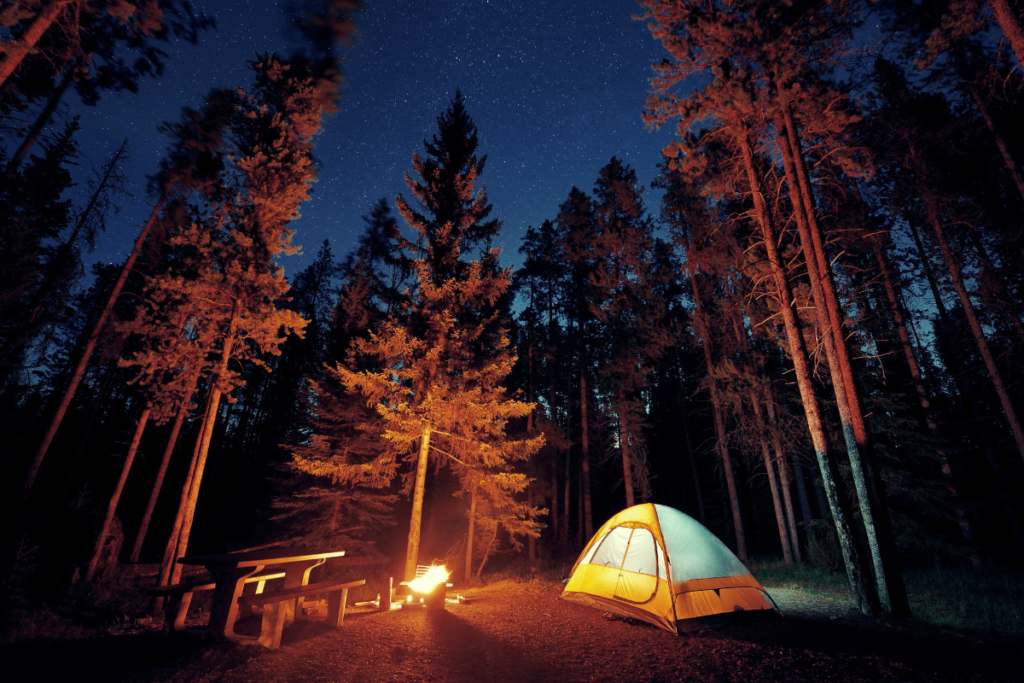
Hotel Options in Estes Park, Colorado
If you don’t want to make the return drive to Denver in one day and camping doesn’t appeal to you, we recommend spending a night in Estes Park. This cute town is the closest to 2 of the main entrances of the park: Fall River Entrance (the main one) and the Wild Basin Entrance.
Estes Park has wonderful lodging options as well as stores, restaurants, and rental facilities for any gear you might need. We could not recommend the Estes Park Mountain Shop more.
| Price | Name | Benefits |
| Average $209/night | Castle Mountain Lodge (9.4 stars on Booking.com) | Located 6 minutes from 2 entrances of the parkSerene and peaceful rooms with balconiesFriendly and relaxing 3-star hotel |
| Average $333/night | Silver Moon Inn (9.0 stars on Booking.com) | Located 12 miles from 2 entrances of the parkLodge-style hotel with a hot tub and daily breakfastLaunderette and BBQ facilities available |
| Average $138/night | Columbine Inn (9.0 stars on Booking.com) | Located 20 miles from 2 entrance of the parkMotel-style lodging with free Wi-Fi and private parking availableSome rooms have a private kitchenette |
FAQs About One Day in Rocky Mountain National Park
Can I visit Rocky Mountain National Park in one day?
Yes! Rocky Mountain National Park’s proximity to Denver makes it a wonderful day trip as it only takes 1.5 hours to make the drive. While you won’t be able to experience all that the park has to offer, you are still able to do a scenic drive and a day hike. Rocky Mountain National Park is well worth the visit, even if you only have a short period of time.
Can I get into RMNP without a reservation?
Yes, you can definitely get into Rocky Mountain National Park without a reservation. Most campsites require reservations ahead of time, but to go in for a day and explore the trails, you just have to purchase the entrance fee upon arrival.
How long does it take to drive the loop in Rocky Mountain National Park?
If there isn’t a lot of traffic, you can drive the length of the Trail Ridge Road in about 1.5 hours each way. It will take a lot longer because you will want to stop along the way to take photos and relax. A lot of travelers take 6 to 8 hours to enjoy the beauty of the road. It’s best to avoid the Trail Ridge Road if you are in a hurry as it’s meant to be enjoyed at a leisurely pace. Plus, if you are in a hurry, the slow cars in front of you will annoy you!
How much is a day pass for Rocky Mountain National Park?
A day pass for a vehicle in Rocky Mountain National Park is between 15 and 35 USD depending on the season. A timed entry permit is not required.
We hope you enjoyed this itinerary for one day in Rocky Mountain National Park! Whether you want to take a leisurely drive around the Trail Ridge Road or attempt to hike Longs Peak, there is something for everyone in this incredible park.
Don’t forget to check out other destinations in North America.
Happy sampling!

